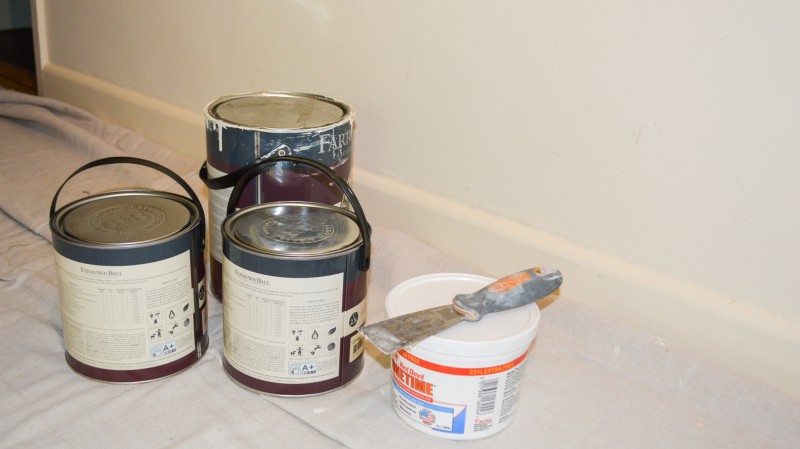You are here: How to pick colours for your perfect space
Tips and ideas on how to decorate with colour
Whether you are looking for inspiration or for a new way to decorate your home, we’ve put together some top tips. As exciting as it is to pick out the perfect paint or a lovely lamp, it can also feel a little overwhelming to make design decisions on your own. How do you know if you are choosing complementary colours or selecting a suitable shade for the space? Ruby Wax joked it was the strain of choosing between 30 shades of cream that first sent her to the Priory.

So how to get started?
“I always encourage clients to use colours that they like, that make them happy, that perhaps have a meaning for them,” says Loke Interiors creative director Jenine Timms. “For example, a colour from a painting of a favourite holiday scene that they want to include in the room.”
Fashion designer turned interior designer Matthew Williamson agrees. “Embrace the colours that resonate most strongly with you and how you want to live,” he writes in his new book, Living Bright. “Focus on those tones and revel in the joy they will spark in yourself and those around you.” His book is part memoir and part design guide. Each chapter focuses on a different colour – and how to use it to enrich spaces that are “an expression of you.” For instance Williamson loves plaster-pink walls for a neutral colour and a “glossy red bed.”
Consider the 60-30-10 rule
Willamson insists there are no colour rules in interior design. But Timms would disagree. There are a few tips you can follow. For those who are less confident with colour it helps to have some knowledge of how different shades work together and how much of any one tone to use in a room.
Timms adopts the 60-30-10 rule. Basically, this means separating your palette with 60 per cent as the overall or primary colour in the room, seen on walls, floors or anything large or central. The 30 per cent is “the secondary colour in your space and supports the main colour but is different enough to give the room interest,” she says. This might include, for instance, cabinets, a sofa, soft furnishings like curtains or bed linen. Finally, the 10 per cent is “your fun percentage, your accent colour,” said Timms, adding: “The accent can be what gives a room character or keeps it neutral. It’s up to you to play and have fun.” This might include smaller pieces, such as an accent chair, lamp or picture.
This rule can be helpful to people who like a lot of different colours in their home but aren’t quite sure how to balance them. On the other hand, if you like a monochromatic scheme, this tip can apply too. Your secondary and accent colours can be different hues of the one main colour, whether it’s shades of white, blue or green.
Choose a colour mood
“The choice of colour significantly influences your mood and the ambiance of a space. So, it is important to consider the atmosphere you desire - light and airy, cozy, or dark and moody,” explains Timms. Light tones create a relaxed, fresh feel, whereas dark colours can feel dramatic and moody. “Reflect on the colours that you’re drawn to in other areas of life,” suggests Timms. This might mean taking inspiration from a movie, a fashion designer’s season, a painting or nature. For instance, the rich, jewel tones of a kingfisher with its turquoise blue wings and vibrant orange breast.
It's important also to consider how the colours would work in the physical space. The amount of natural light is a big factor. “Are you aiming to create the illusion of a bigger, brighter room or a smaller space,” asks Timms. If you want to brighten up a space, choose white or pale shades of grey, blue or pink. To bring warmth to a north-facing room, consider fiery reds, oranges or yellows. Colour can be used to tie the interior décor together even if the rooms all look and feel different. This can be achieved by using the same shade on the trim throughout the home.
Choose between a cool colour or a warm scheme
Paint manufacturer Dulux suggests using the colour wheel to help you pick your scheme. Complementary colours can be found on the opposite side of the wheel, such as blue and orange, red and green or purple and yellow. Used together, the colours will help create a striking interior. For instance, you might choose a pale grey/white as your primary colour with blues and oranges to add interest and a touch of energy. Colours that sit next to each other on the wheel are related. For instance, green sits between yellow and blue. If you are focusing on one or two colours, then you can keep to shades of the same basic colours, such as a dark olive green with a lighter lime shade.
The colour wheel can be divided into warm and cool tones. Warm palettes include reds, oranges and yellows, while a cool scheme is greys, greens and blues. Timms advises: “Determine whether the flooring features warm or cool tones, and then consistently embrace that tone throughout the scheme/your home.” Colours that aren’t in the same colour family or that aren’t exactly harmonious can work very well together, according to Dulux. This suggests there are no rules! Beauty is in the eye of the beholder, as the saying goes.
What is the latest fashion in colour?
Dulux has already announced their colour for 2024. Drum roll, please. It’s pink, probably influenced by the Barbie movie. It’s not a bright, shocking Barbie pink, but a soft, muted shade called ‘Sweet Embrace.’ Timms says: “This delicate pale pink aligns perfectly with the current trend of embracing softer hues. Sweet Embrace is cooler, more sophisticated and brings a sense of tenderness, comfort and assurance.” Meanwhile Dulux reckons it’s a great foundation colour that’s ideal for pairing with many other shades.
So, should we be influenced by what paint pushers are predicting for the colour of our walls? “I am anti-fashion but that doesn’t mean I don’t notice,” said Renee Killian-Dawson, creative director of Killian-Dawson Studio. She encourages homeowners to be brave in their colour choices. Her personal favourites are aubergine and pale turquoise.
Killian-Dawson says the most important factor to consider is the building itself. “The buildings themselves have a lot to say, and I listen whether it’s an older building or a project that has not yet been built. That might sound hippy dippy but it’s an intuitive process.” For instance, a Georgian dining room will suit different colours to a medieval great hall. We can all choose colours to tell the story of our own homes.
Colour can lift your mood. So be bold and pick the hues that make you happy. Work out which shades speak to you and create your own personal paradise. Whether a delicate pink, or earthy olive green or lively citrus yellow, there are colours that be suitable for everyone and every home.
If you are looking to make some home improvements, you may find some of these services useful
Building Regulations
Find details of local experts who can help with Building Regulations
Builders
Find local help with a building project
Architectural Design Services
Find local Architectural Design experts
Structural Inspections
Find an expert to carry out a structural inspection
Building Surveys
I want a local surveyor to do a Building Survey for me
Choose which Architectural service you require
If you are not sure which service you require, check out the options available...


